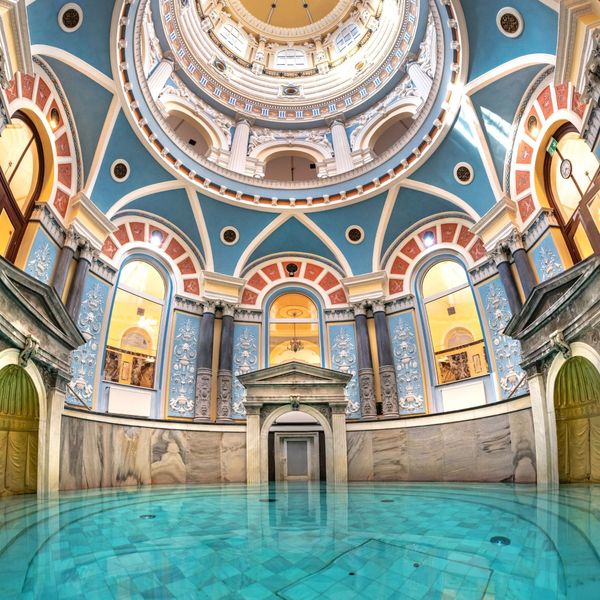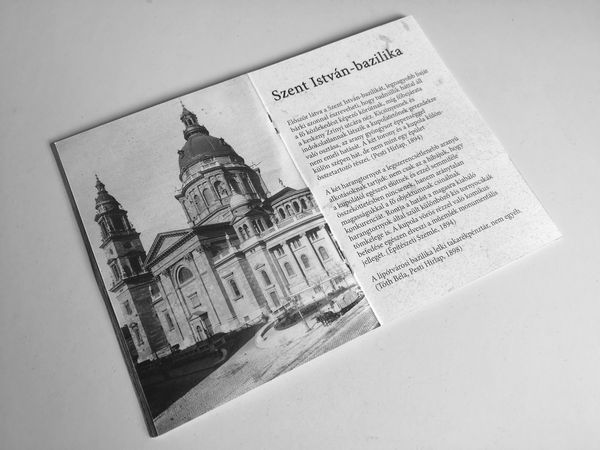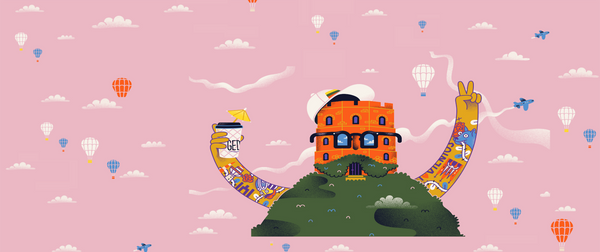The boundaries between surrealist illusions and history are blurred in the work of the 35-year-old Romanian-born Botond Keresztesi, while his visionary imagery carry an eerie sense of reality. The Budapest-based painter’s works combine elements of symbolism, Dadaism, and Art Nouveau, masterfully blending them with the typical accessories of contemporary consumerism, as well as photographs. In his collages Keresztesi experiments with the contrasts between plane and space, real and fictitious, giving birth to Teletubbies performing the Dance of Matisse, Pinocchio on Mars, a female sculpture with a machine-gun body, or aliens rocking Crocs slippers.
In this interview, we talk about some of the seminal moments of his career, the meeting of digital and analog methods, and how ideas become tangible realities.



Is this the kind of career you have always wanted to pursue?
A childhood dream of becoming an artist led to a rather different type of schooling as an adolescent, followed by a teaching degree, which I dropped out of before finally taking up painting again at the University of Fine Arts in Budapest. Later I was able to start my career with the help of a scholarship. In the meantime, the graffiti and skateboard subcultures, along with the avant-garde, have had a significant influence on my visual world, a genre that nowadays I rarely turn to.
What was the turning point where you found your ‘own voice’?
In 2015, RGB—Roman, Gothic, Baroque opened at Horizont Gallery, which I consider my first major solo exhibition. These paintings set my course: that my art would fundamentally play with narrative planes and history. Here I created a version of the danse macabre that I reimagined with the Teletubbies.
Recently, the public had the opportunity to see some of your earlier works at a group exhibition at the MODEM in Debrecen. To date, you have participated in numerous international exhibitions from Berlin to Kiev and most recently overseas. What do you consider to be your greatest international success?
Last year, my exhibition The opium smoker’s dream at The Hole Gallery in New York, in which I attempted to create an illusion that resembled both a toxic experience caused by drug use, a hallucination, and a vision created with VR glasses, received a greater response.


What are some of your artisctic inspirations?
Recently I’ve become interested in applied art, and since then I’ve been looking at the city and building facades with a completely different eye, noticing things I never noticed before. In terms of painting, I’m greatly influenced by the work of Avery Singer, a New Yorker my age. His imagery and technique really captivate me, as I used to be a big fan of the airbrush as well. A few years ago I discovered the art of Jon Rafman, who has a background in film, but I find the universe he creates incredibly fascinating. He’s basically a 21st-century Hieronymus Bosch, building a very dark, AI-centric world through his 3D animations.
What is your workflow like?
I always have a current fixation that develops into a leitmotif on which I base the material. This is completely unrestrained and intuitive, I use my own photographs and virtual imagery as well. I focus primarily on oil painting but have also exhibited charcoal drawings, paper works, and installations. Otherwise, I love classical techniques such as ceramics, oil paint, pastel, and watercolor. I currently work with oil paints, and I think that gives an artist enough ammunition for a lifetime. These materials have a lot of potential, are of high quality, and can be handled in many different ways. I usually work on one piece at a time, first completing the image digitally and then the painting itself is a more meditative phase. I always play with things digitally, the intuitive, creative process for me happens there.
How do you relate to the emergence of the next-generation artificial intelligence imaging software?
This hype reached me last summer, but it didn’t really rock my world. I see it more as an entertaining experience, but it hasn’t changed the way I relate to or create images. I realized that I’m actually doing the same thing as an AI, which is to take a collection of photos and images and create something new, reinterpreting them and changing the motifs, but in a more human way. AI did not really capture my imagination.
What are you experimenting with at the moment?
Last year’s process was to exhibit the images in spaces with painted backgrounds, and I started to play with contrasting strong spatial, visual elements with ornaments in the background, which are in turn planar graphic elements. The two gave an interesting contrast at first, and then they slowly merged, so that in the newer paintings, these ornaments are the main motifs, and within them, the figurative elements appear in liquid metallic form.

This circular liquid motif repeatedly appears in your recent work. Where did this concept come from?
I like to listen to documentaries and whodunits in the studio while I’m painting, they often influence me. This motif dates back to the Covid period when I used to watch the Tan kapuja YouTube channel (the channel of the Dharma Gate Buddhist College—the Transl.) and listen to a lot of Buddhist lectures. This circularity resonated with me at the time, and in very simple terms, cyclicality came in, not only in relation to life but also in relation to history and culture. In the process of creation, I knead slices of history, especially art history, into the dough. I always thematize the epochs, including my own.


What other directions would you like to explore?
In the future, I would like to incorporate objects into my art, perhaps even placing them on the frames with my own hands. I’m thinking of some 3D artwork that I could include. I also collect records myself, so I’m very inspired by requests like the Jazzbois cover design. I would love to make album covers for other Hungarian musicians that I feel close to. Speaking of other projects, some friends of mine, the Rios skateboarding crew, made a silkscreen stencil for skateboard decks from one of my works, which I’m very impressed with.
What are your plans for exhibitions in the near future?
It’s always been a dream of mine to fill an institution the size of the Kunsthalle with huge paintings, on a really large scale. MODEM has already been a great opportunity, and I have an exhibition coming up in Hong Kong soon in the Double Q exhibition space, an offshoot of Q Contemporary, with brand new material.



The most beautiful spas in Eastern Europe | Top 5

Have you seen it? Here is the Budapest anti-city guide booklet!










